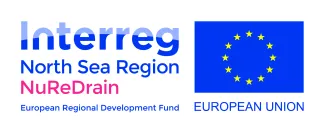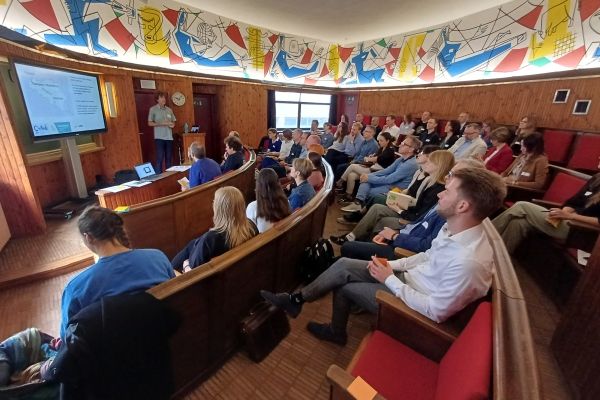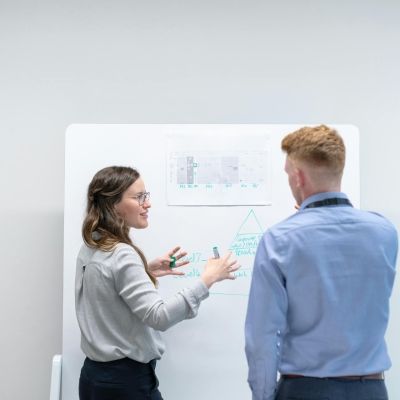NuReDrain 2.0: improvement, application and upscaling of phosphate removal
With special granules made from iron tailings originating from drinking water production, phosphates can be filtered from watery residual streams, such as drainage water from agricultural firms. This had already been demonstrated several years ago in the NuReDrain project. In a continuation of this, VITO further refined the production of the filter granules, identified some interesting applications and optimised the regeneration of the granules. The greatest challenge for the future: upscaling.
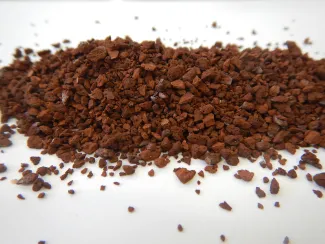
Considerable quantities of tailings can remain in the facility at drinking water production centres when producing drinking water from ground or surface water. However, this iron-rich waste stream can be reused advantageously. For example, the tailing particles can be converted into what is known as filter granules: particles that, in turn, have a purifying effect because they bind substances like phosphates and arsenic. Phosphates (based on phosphorus) occur in drainage water and sluice streams from agricultural firms. Too high concentrations of these are problematic, as in surface water this causes eutrophication: explosive growth of algae that puts pressure on other water life. This is also a problem at drinking water production centres that use surface water, as the algae growth obstructs the water treatment.
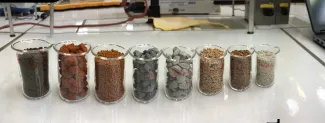
Minuscule sponges
The development of the filter material (the granules) and initial pilot tests took place within the NuReDrain project – NuReDrain stands for nutrients removal and recovery from drainage water. The project focuses on testing filter systems to remove phosphates from agricultural water. It is being coordinated by VITO/Vlakwa and supported through the European Interreg North Sea Region Programme and the Provinces of Antwerp, East Flanders and West Flanders.
NuReDrain ended in 2019, but the work was far from complete. It was extended by Coronavirus, among other things, and an additional budget was made available for further research. This enabled the project partners – a collaboration between organisations from Denmark, Germany and Flanders – to continue their demonstration projects.
The initial project proved that phosphates (the ‘nutrients’ that promote the disruptive algae growth) can be removed from drainage water with the filter granules. The subsequent project investigated whether and how these phosphates can be recovered from the granules, so they can be reused in fertilisers if necessary. This turned out to be possible. ‘And done in such a way that didn’t damage the filter granules, so they can be reused too,’ says Bart Michielsen from VITO. ‘That’s how we make the whole approach circular.’
The technology for creating the granules was also improved. ‘Before, the filter granules, after we’d granulated them from tailings, aside from drying them, also had to be heated to 400 degrees,’ says Jef Bergmans from VITO. ‘We no longer need to do the latter, making the production of the granules more efficient (and cheaper) and environmentally friendly now.’
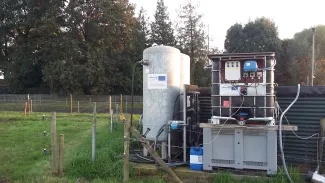
Potential in greenhouse horticulture
During the extended project, some practical applications were also considered. Where can the filter method provide effective added value, without farmers needing to invest too much money, time and effort? ‘A preference for local use and reuse speaks for itself, even just to avoid extra transport,’ says Bergmans. ‘This is also why it’s important that phosphates can be recovered from the filter granules and reused, i.e. on-site at the agricultural firm.’ The filters with granules can be installed at the end of a drainage pipe running from a field to an adjacent stream, or they can be connected to the tanks in which greenhouse horticulture firms collect their drainage water. For the latter firms, the phosphate concentrations are generally higher, meaning the approach works better here. ‘That means applications in greenhouse horticulture may well have the largest potential.’
In recent years, a range of filter systems have been tested, in Belgium and abroad, in fourteen locations. Some of this took place in several testing centres, where agricultural innovations are shaped. Those centres may play an important role in any future implementations too. Charlotte Boeckaert from Vlakwa: ‘Farmers wanting to get started with the filters will of course need to be trained for this. In collaboration with research organisations like PCS or Inagro, for example, they can receive tailored advice.’ Alongside this, participating farmers can receive a 75 % subsidy for their investment costs, as these filter systems have been included in the list of non-productive investments from the Flemish agricultural investment fund (VLIF-NPI).
In order to make a real breakthrough, applications will need to be relatively cheap, as well as easy to implement. But does the technology not risk becoming victim of its own success, given the limited availability of filter granules today? Boeckaert: ‘We do indeed need to be able to produce enough filter granules. This is an important next step now the extended project is over (NuReDrain ended in June 2023).’ External partners are more than welcome for this upscaling. Michielsen: ‘We’ve ensured that the production can take place efficiently and at a large scale. Whereas we could handle a few kilos of filter granules at first, we’re now achieving several hundred kilos. In technical terms, that’s a serious step forward. We hope it can inspire others to take up the innovation and start applying it at an actual scale.’
